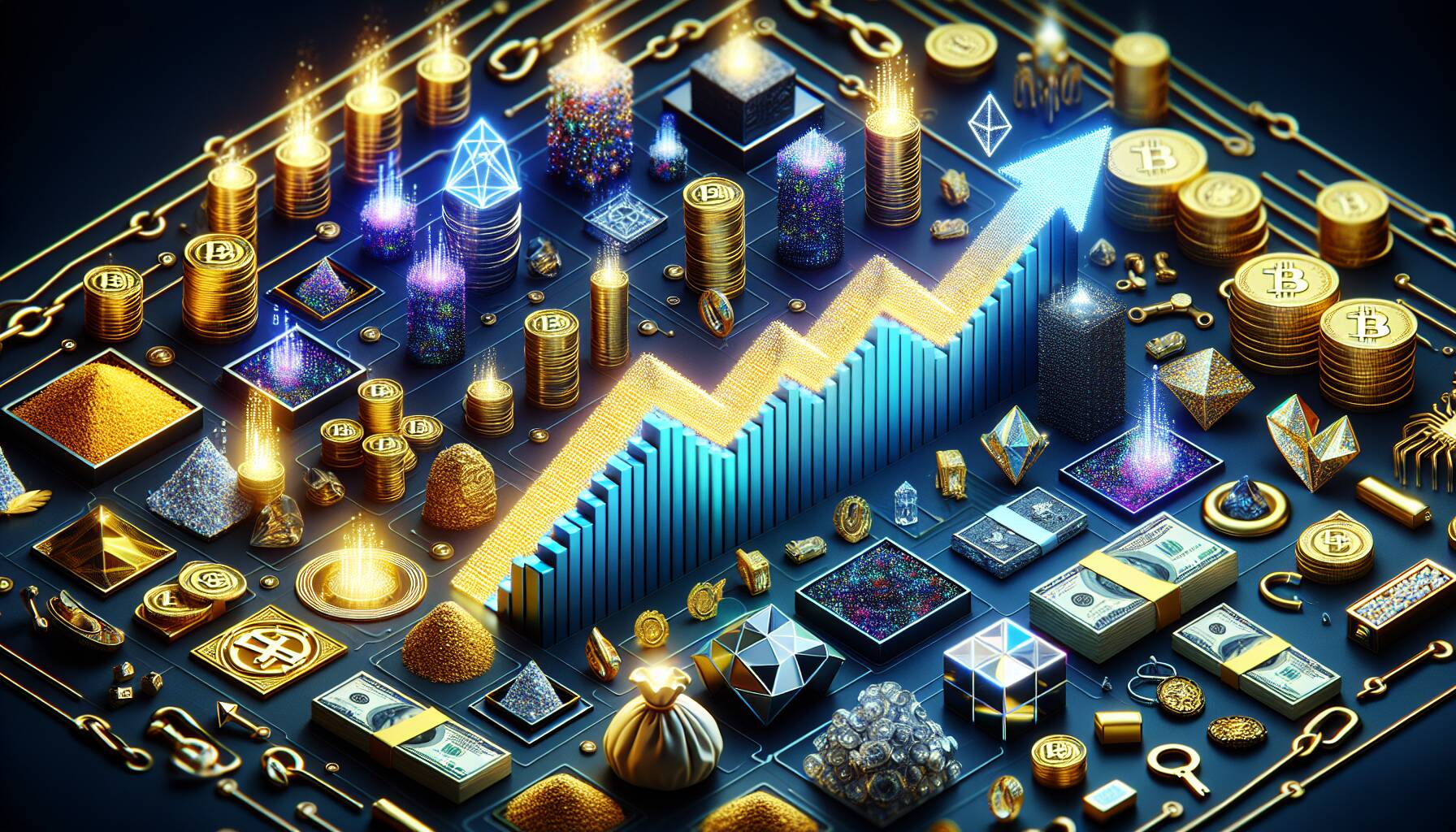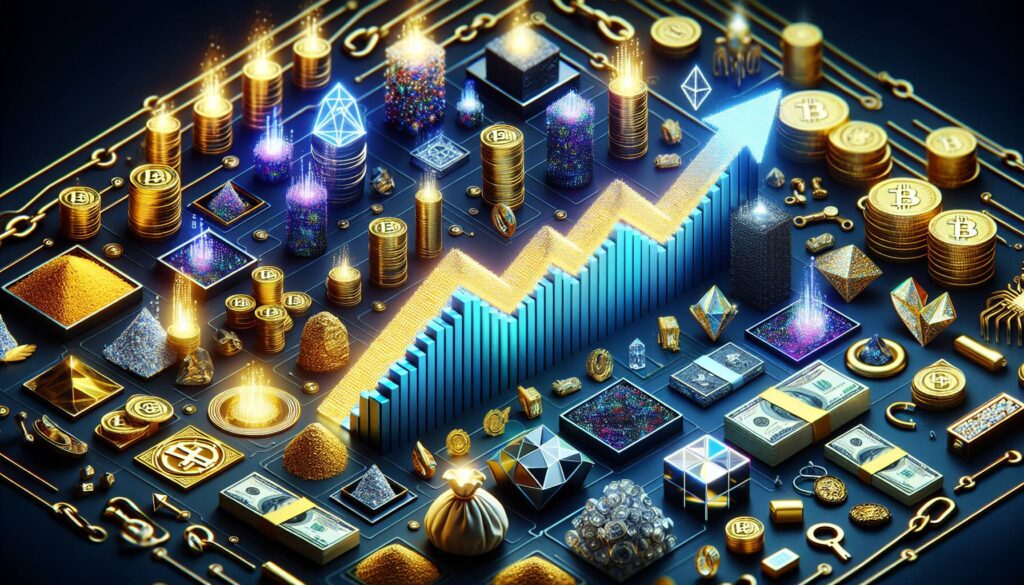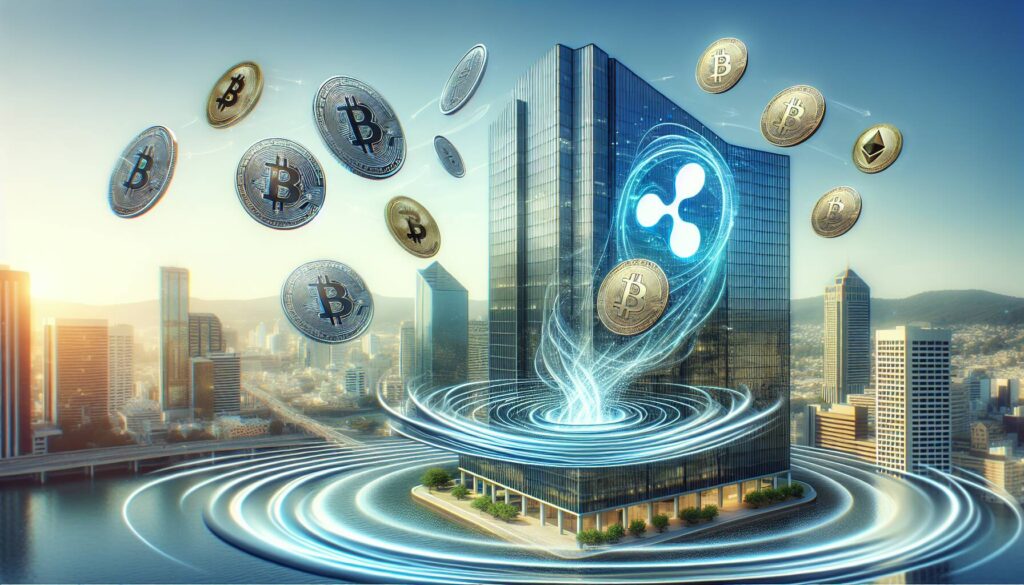The real-world asset (RWA) tokenization market has experienced remarkable growth, soaring by an astounding 380% over the past three years and now valued at $24 billion. This surge signals a pivotal shift as traditional finance increasingly embraces blockchain technology, according to a collaborative report from RedStone, Gauntlet, and RWA.xyz. The findings from the “Real-World Assets in On-chain Finance Report” illustrate that asset tokenization has moved beyond experimental phases to achieve significant institutional adoption, especially in the context of 2024-2025.
Tokenization involves converting physical assets, like stocks and bonds, into digital tokens that can be easily traded on blockchain platforms. This innovative approach aims to cut costs and streamline processes associated with existing financial systems. Predictions about the future scale of this market vary widely, with estimates ranging from $2 trillion by McKinsey to a staggering $30 trillion by 2034 as suggested by Standard Chartered.
“The RWA market’s explosive growth is not just impressive numbers — it’s evidence that traditional finance is finding genuine utility in blockchain infrastructure,”
the report states, highlighting significant investments like BlackRock’s $2.9 billion BUIDL fund and Apollo’s private credit tokenization initiative. These developments may represent the early phases of what could evolve into the most substantial capital migration in financial history.
Furthermore, while stablecoins are often not classified under RWA tokenization, the report argues for their similar potential. U.S. Treasury Secretary Scott Bessent has noted that stablecoins could enhance the supremacy of the U.S. dollar, a view that also applies to tokenized Treasuries. By supporting government financing and managing public debt, these tokenized assets may play a critical role in advancing U.S.-denominated investment opportunities within the expanding digital economy.

Growth of Real-World Asset Tokenization Market
The real-world asset (RWA) tokenization market is experiencing significant growth, reflecting a shift in traditional finance towards blockchain technology.
- Market Growth
- 380% increase in three years, reaching $24 billion.
- Predictions for market size vary, with estimates ranging from $2 trillion to $30 trillion by 2034.
- Institutional Adoption
- Transition from experimental pilots to scaled adoption (2024-2025).
- Notable investments include BlackRock’s $2.9 billion BUIDL fund and Apollo’s ACRED private credit tokenization.
- Efficiency and Cost Reduction
- Tokenization aims to reduce costs and inefficiencies in legacy financial infrastructure.
- Moving towards digital assets promotes faster and cheaper transactions.
- Impact on U.S. Dollar Dominance
- Tokenized assets, such as Treasuries and corporate bonds, could support U.S. dollar supremacy.
- Expand investment opportunities in the global digital economy, reinforcing the role of USD.
“The RWA market’s explosive growth is evidence that traditional finance is finding genuine utility in blockchain infrastructure.”
Comparative Analysis of the Real-World Asset Tokenization Market
The rapid expansion of the real-world asset (RWA) tokenization sector, which has surged by an impressive 380% to reach $24 billion, highlights a pivotal shift in traditional finance towards blockchain adoption. This leap is not just a numeric achievement; it signals an emerging trend where financial institutions are recognizing the streamlined efficiencies and capabilities provided by blockchain technology. Comparing this growth to similar news in the fintech realm, one cannot overlook the competitive advantages offered by tokenization against traditional asset management methods.
One key advantage is the drastic reduction in transaction costs and enhanced liquidity that tokenized assets bring to the table. Unlike conventional methods which often involve cumbersome intermediaries, tokenization allows for instantaneous transfers and settlements, thereby reducing overhead expenses and time lags in transactions. In contrast, platforms like NFTs and decentralized finance (DeFi) still face regulatory hurdles and technological barriers that limit their mainstream adoption. This positions the RWA market as a more viable option for investors looking to traverse the complexities of both traditional and digital asset landscapes.
However, the rise of RWA tokenization isn’t without its drawbacks. Regulatory scrutiny remains a significant barrier, particularly as governments around the world grapple with the implications of blockchain technology on monetary policy and financial stability. The potential for regulatory pushback could hinder market growth and create uncertainty, affecting investor confidence. Additionally, the market’s reliance on the traditional finance sector introduces a risk; any downturn in this area could reverberate through the tokenized asset space.
The beneficiaries of this evolving landscape are clear: institutional investors and financial entities seeking innovative avenues for diversifying their portfolios stand to gain immensely. Corporations like BlackRock and Apollo are at the forefront, using substantial funds to engage in tokenization projects that could redefine asset management. However, smaller entities or traditional financial firms resistant to change may find themselves disadvantaged as the tokenization trend catches fire, forcing them to adapt or risk obsolescence.
Similarly, the significance of tokenized Treasuries grows in the current economic climate. By facilitating government financing operations and widening investment opportunities for USD-denominated assets, tokenization could enhance the global dominance of the U.S. dollar. Yet, as the market matures, the pressure mounts for regulatory frameworks that protect investors while encouraging innovation. Failure to balance these interests could create friction, leading to a turbulent growth environment.

















